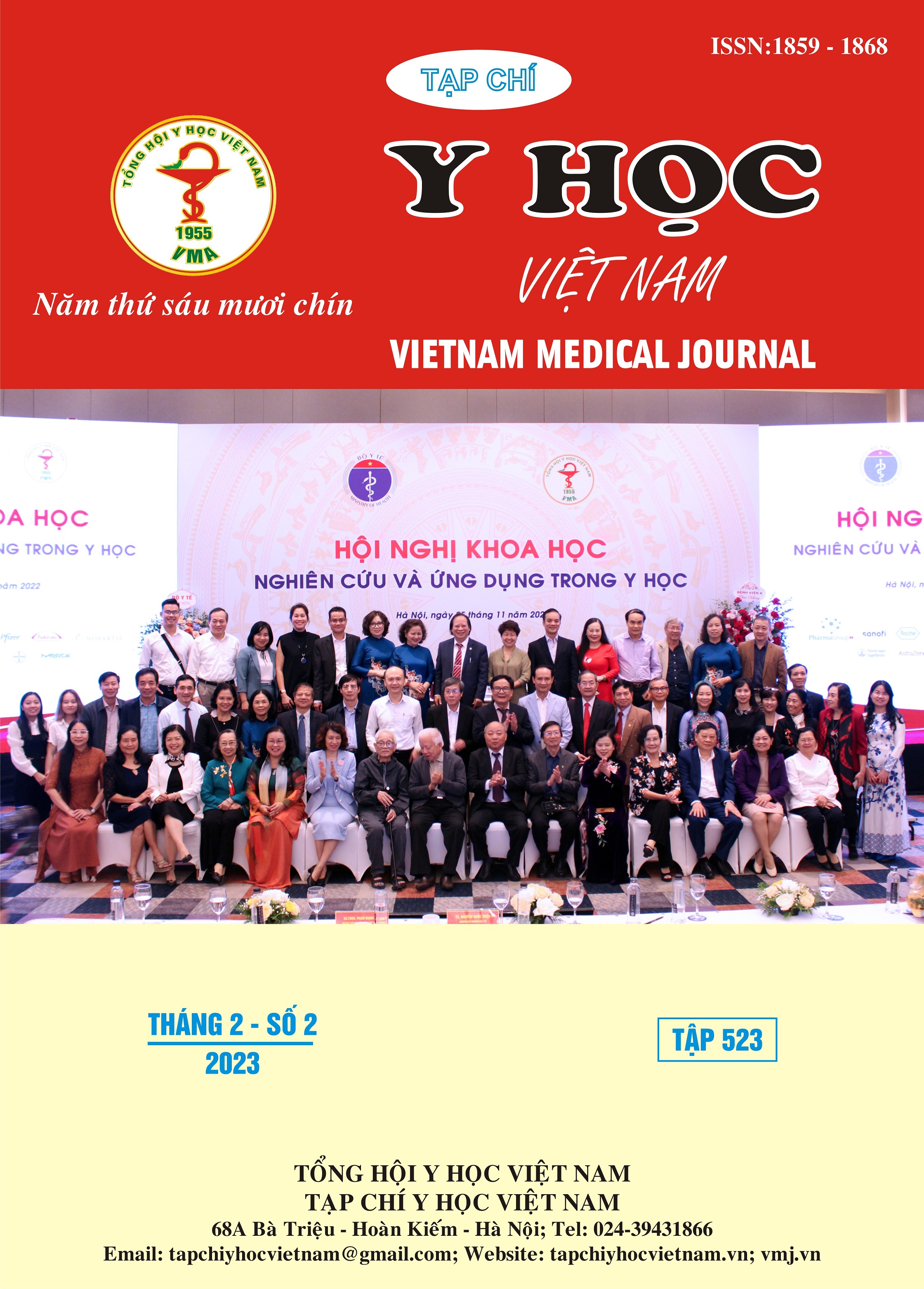VENTILATOR-ASSOCIATED PNEUMONIA CAUSED BY ACINETOBACTER BAUMANNII AT CHILDREN HOSPITAL 1
Main Article Content
Abstract
Objectives: To describe characteristics of epidemiological and clinical of ventilator associated pneumonia due to Acinetobacter baumannii and susceptibility of antibiotic. Subjects and methods: A retrospective case series of 34 ventilator associated pneumonia patients with A. baumannii positive quantitative culture of tracheal aspirate in pediatric hospital 1 from January 2020 to December 2021. Results: The median age was 14,4 months. 55,9% of cases were over 12 months. Half of cases were transferred from another hospital. All patients had risk factors for ventilator associated pneumonia; enteral feeding in 34/34 (100%) patients; using proton pump inhibitor 22/34 (64,7%); reintubation 18/34 (52,9%). Common underlying illness was neuromuscular disease and congenital heart disease. Common clinical symptom was fever 79,4%. Elevated C-reactive protein >20 mg/dl was 24/34 (70,6%) cases. PCT > 2 ng/ml in 50% cases (6/12), median PCT was 1,5 ng/ml. The median time before starting ventilator associated pneumonia was 6 days. The predominant lesion on chest X-rays was broncho-pneumonia (73,5%) and lobar-pneumonia was 26,5%. The rate of co-infection was 32,3%. Stenotrophomonas maltophilia (n=6, 54,5%), Klebsiella pneumoniae (n=2, 18,2%); Pseudomonas aeruginosa (n=1), Staphylococcus aureus(n=1) and Elizabethkingia meningoseptica (n=1). The rate of antibiotic resistance of A.baumannii was: imipenem 88,2%, meropenem 91,2% and levofloxacin 85,3%; ciprofloxacin 97,1%; amikacin 14,7%; ampicillin/sulbactam 85,3%. The mortality rate was 26,5%. Conclusions: Ventilator associated pneumonia due to A.baumannii has high mortality rate. A.baumannii are highly resistant to available antimicrobials. Therefore, more research on antibiotic therapy for children infected with A. baumannii is necessary.
Article Details
Keywords
Acinetobacter baumannii, ventilator associated pneumonia, children.
References
2. Ngô thị Thu Hiền, Phùng Nguyễn Thế Nguyên, (2016), Đặc điểm vi sinh qua cấy đàm và PCR đàm trên trẻ Viêm phổi liên quan thở máy tại khoa hồi sức tích cực chống độc bệnh viện Nhi Đồng 1 từ tháng 06/2015 đến tháng 04/2016, Luận văn tốt nghiệp bác sĩ nội trú, Đại học Y dược TP.HCM, pp. 36-54.
3. Lê Thị Thanh Thủy, Nguyễn Thị Thanh Hà, (2016), Đặc điểm lâm sàng và vi sinh nhiễm khuẩn huyết do Acinetobacter spp tại bệnh viện Nhi Đồng 1, Luận văn tốt nghiệp thạc sĩ Y học, đại học Y khoa Phạm Ngọc Thạch, pp. 31-53.
4. Nguyễn Thị Lệ Thúy, Hoàng Trọng Kim, (2005), "Đánh giá viêm phổi trên trẻ được thông khí hỗ trợ tại khoa hồi sức cấp cứu, bệnh viện Nhi Đồng 1", Y học thành phố Hồ Chí Minh, 9 (1), pp. 1-6.
5. Pneumonia (Ventilator eassociated [VAP] and nonventilator associated pneumonia [PNEU] event Protocol (2021), Centers for Disease Control and Prevention (CDC) & National Healthcare Safety Network (NHSN), pp. 5-9.
6. Chastre J, Fagon J Y, (2002), "Ventilator-associated pneumonia", Am J Respir Crit Care Med, 165 (7), pp. 867-903.
7. Vijay G, Mandal A, Sankar J, Kapil A, Lodha R, Kabra SK. Ventilator Associated Pneumonia in Pediatric Intensive Care Unit: Incidence, Risk Factors and Etiological Agents. Indian journal of pediatrics. Oct 2018;85(10):861-866. doi:10.1007/s12098-018-2662-8.
8. Zhang T, Xu X, Xu CF, Bilya SR, Xu W. Mechanical ventilation-associated pneumonia caused by Acinetobacter baumannii in Northeast China region: analysis of genotype and drug resistance of bacteria and patients' clinical features over 7 years. Sep 15 2021;10(1):135. doi:10.1186/s13756-021-01005-7.


